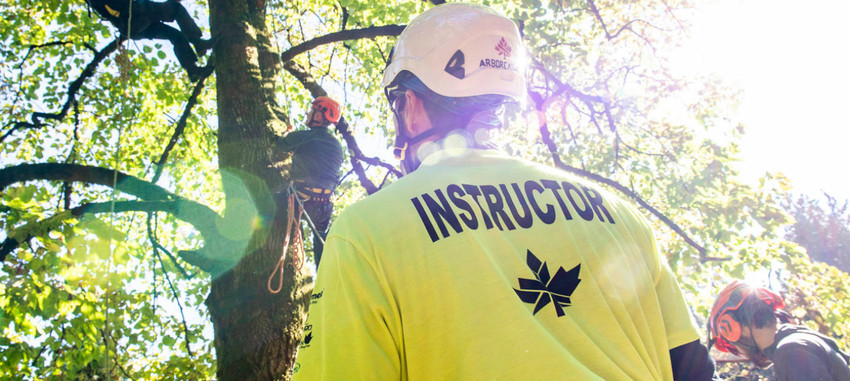TFTC #54 Establishing Patient Contact as an Arborist Rescuer
Arborculture Canada Training and Education LT by DJ Neustater Sep 5th 2025Remember to Check Yourself, Before You Wreck Yourself
When you find yourself in a challenging situation, it is essential to pause, take a deep breath, and assess the circumstances. This approach promotes safety, preparedness, and the likelihood of a successful outcome. Prior to initiating a rescue, take into account the human factors that could potentially hinder success. Lastly, take another deep breath to lower your heart rate, enhance your situational awareness, and maintain mental clarity.
STOP, Breath And Review
- Has the E.R.P been actioned and help is on the way?
- Has scene hazards and assessment been completed and risks identified and/or mitigated?
- Is ascent into the tree required?
- Are all components of the rescue kit present and ready?
- Has the rescue plan been communicated, reviewed and understood by all team members?
Consider Human Factors
Physical & Mental Factors
- Stress Management
- Health
- Fatigue
- Task load
- Comfortability
- Situational Awarness
- Self Awareness
Communication Factors
- Reluctance to ask questions
- Failure to state things clearly
- Lacking authority
- Being ignored
- Dificulty listening
Organizational Factors
- Inadiquate Resources
- Poor Planning
- Lack of S.O.P/E.R.P
- Lack of training & educaiton
- Conflicting goals or priorities
Judgment
Factors
- Distractions
- Peer Pressure
- Insufficient Knowledge
- Ignorance
- Overconfidence
Utilize the O.O.D.A Loop
Following the implementation of the ERP and conducting a scene assessment, the rescuer can initiate contact with the patient. For an arborist, this may require ascending to an elevated position, utilizing safe, smooth, and efficient movements to establish direct contact with the patient. Alternatively, it may involve aiding in the extraction or evacuation of a patient through lower ground controls when operating mobile elevated work platforms (M.E.W.P).
Throughout these actions, it is essential to consistently observe, orient, decide, and act (O.O.D.A) regarding the surrounding environment. This O.O.D.A loop is crucial for sustaining situational awareness and making informed decisions during an emergency. Additionally, always verify systems and equipment to ensure the safety of rescuers, patients, and the team.
Ascent to Patient
If an aerial rescue is necessary for the patient and all preceding steps of the emergency action plan have been executed, the subsequent action will involve safely entering the tree. This requires a well-organized and rehearsed aerial rescue kit equipped with the necessary tools. It is important to avoid carrying excessive equipment; simplicity, safety, and efficiency should be prioritized. As an arborist rescuer, consider how your position impacts your ability to reach the patient. Whenever feasible, take the time to prepare your setup for optimal access to the patient in a secure and comfortable manner. Keep in mind that a smooth approach is often quicker, enhancing the chances of a successful, efficient, and safe rescue.
When it comes to climbing systems, kits and equipment always ask yourself does it see?
When it comes to climbing systems, kits and equipment always ask yourself does it see?
If yes to all three, it is likely an appropriate approach
If yes to all three, it is likely an appropriate approach
Make patient contact in a comfortable and suitable position.
Verify integrity of all anchor points and equipment.
Secure the patient.
☑ Make patient contact in a comfortable and suitable position.
☑ Verify integrity of all anchor points and equipment.
☑ Secure the patient.
Once the rescuer has ensured their own safety in relation to the patient, it is crucial to assess the status of the patient’s life support equipment. Should any component, including climbing harnesses, ropes, mechanical devices, or anchor points, be found to be compromised, it is essential to prevent the patient from experiencing any potential falls or additional injuries. This can be effectively accomplished by establishing a secure connection to a secondary rescue system or directly to the rescuer. It is vital to remember that prior to engaging in any patient contact or aerial rescue operations, the rescuer must possess the necessary training, qualifications, and preparedness to perform these techniques and provide first aid.
In this rescue simulation, the rescuer is preparing to establish a direct connection between the “patient” and a secondary life support system. Following this, a load test will be conducted to verify that the patient is properly secured in suspension and safely packaged for transport.
Thank you to the following contributors
Thank you to the following contributors
All organizations, individuals, and publications mentioned herein are acknowledged for their valuable contributions and support of this article series. We extend our gratitude for the various photo credits, content, and reviews provided by those listed below. Your support, service, and commitment to safety are greatly appreciated.
References
References
Arboriculture Canada Training & Education, (Since 1999). Entire ArborCanada Team.Engström, A. Primary Care Paramedic (PCP) & Member of T.E.A.A.M.Fire Rescue, H.V.F.D. (2024). Highlands Volunteer Fire Department. Highlands, British Columbia, Canada.John Ball, PH.D., CTSP (2022). Tree Worker Safety Update By the Numbers: Another Us vs. Them. TCIA.T.E.A.A.M, (2025). Technical Evacuation Advanced Aero Medical. TEAAM. Canada.Tree Climber Rescue & Emergency Preparedness, (2024). ArborCanada Workbook. Tresselt, T. (2024). Director of Training & Education. Arboriculture Canada Training & Education. Canada.

